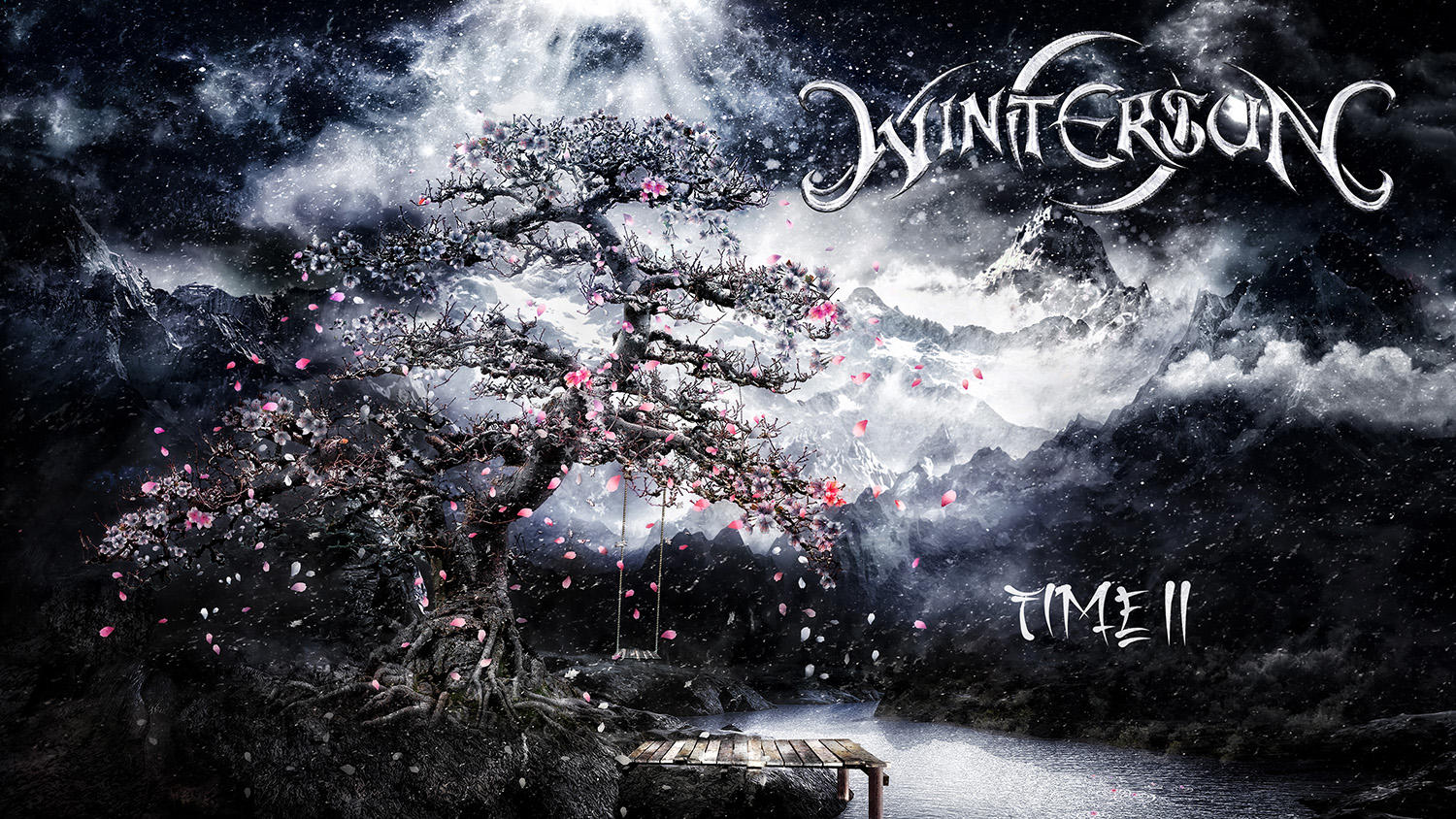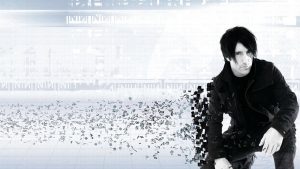Wintersun’s Time II has finally been released after 12 long years. Originally announced before the release of Time I, the album was soon delayed due to mainman Jari Mäenpää’s apparent dissatisfaction with the sound. Enough ink has been spilled on the drama surrounding Jari and his surprisingly stable band—I had not realized that Wintersun has Nightwish’s rhythm section in Kai Hahto on drums and Jukka Koskinen on bass, while guitarist Teemu Mäntysaari is now in Megadeth and, more importantly, contributed guitar solos to the legendary Hevisaurus—and, frankly, it isn’t relevant whether his home studio has a sauna or whatever. What’s more relevant is whether the 12-year wait was worth it. Is Time II a good record? Were the fundraisers and jokes about quantum computing worth it? And like Time II, those questions are simultaneously simple and complicated.
At its root, Wintersun is best understood as a melodic black metal band. Rooted in the wave of Scandinavian melodic blackened/death metal that arose in the early 2000s, Wintersun’s sound is still strongly reminiscent of that which went before, bands like Ensiferum, Månegarm, Thyrfing, and Turisas. This sound’s root is Hahto’s double kick and his ferocious blast beats. These are topped by trem-picked melodies, often in harmonic minor, and topped with guitar godly solos from two of Finland’s finest shredders.1 Floating on the surface comes Jari’s screams and cleans. His screams, again, exist in the melodic black and death space from the early 2000s, while his cleans verge on power metal. His gritty voice plays a major role in Wintersun sounding like Wintersun, as he has a unique approach to both how he produces his vocals and the melodies he sings. Like many bands of this era, the tendency towards maximalism in presentation means that the bass sits low in the mix and often goes unremarked if you aren’t specifically looking for it. And if maximalism isn’t Jari Mäenpää’s middle name, then it’s the meaning of his last name.
Time II is primarily made up of four through-composed songs that run between 6 and 13 minutes. A through-composed song is something like Weird Al’s “Biggest Ball of Twine in Minnesota,”2 where the song doesn’t have a verse-chorus structure in a traditional sense, but rather there will be melodies and chord progressions that resurface, often varying on a second or third introduction. While arguably common in modern metal writing, rarely have I felt the need to mention it.3 In the case of Time II, however, this is precisely what makes it such an interesting departure from Wintersun’s debut and, as well, what makes it an album that’s difficult to wrap your mind around. Each of these songs—”The Way of the Fire,” “One with the Shadows,” “Storm,” and “Silver Leaves”—feature a couple of primary progressions around which the song hovers. The first progression usually introduces a theme that will be repeated, while the second is a kind of refrain that the song will double back on. Yet each song morphs and twists, feeling simultaneously repetitive and novel—leaving the listener with the impression of an A-B-A structure that doesn’t exist and waiting for whistleable melodies that might not resurface.
There is a subtle ingenuity to Jari’s compositional approach that feels inspired by classical music. Each song modulates, with melodies floating on top of the undulating rhythm, while ideas seem fleeting; surfacing before falling away under moist keyboard textures. While Opeth once said that we should view their songs like “movements,” not “songs,” Wintersun writes like that’s the case. And the result for a listener can feel dreamy and sometimes disorienting, waiting for a theme to be repeated where it will never be. This is emphasized by a maximalist production job that even at a DR7/8 feels like every square millimeter of audio retail is taken up by something. This creates a big sound with a lot of moving parts and unlike “Biggest Ball of Twine in Minnesota,” nothing snaps the listener back into place and reorients them.
The real brilliance of Time II, however, shines through the guitar work. Moreso than the composition or the production—which, honestly, would have benefited from someone like Jens Bogren who has conquered the question of how best to produce big, orchestral metal—the guitars are where the real dynamics arise. This is clearest, for me, in the way that “Ominous Clouds” feeds from the plodding, mid-paced “One with the Shadows” and into “Storm.” With pristine form and beautiful tone, the song sounds like how I imagine David Gilmour would have sounded if he played like Yngwie Malmsteen. The underlying keys exist only to pad these lances of sound that explode from Jari’s incredible fingers. This feeds into Dimmu Borgirian orchestral hits and the primary theme from “Storm,” where the chord progression around which the song will modulate is introduced. But again, the first real change arrives at the 4:50 mark where the guitar suddenly leads the song into a different place! Here we see the kind of compositional brilliance that isn’t just a song rotating around an A and B part, but rather that changes the feel, modulates the vibe, and feeds back into a majestic and beautiful refrain.
The juxtaposition of brilliant, adventurous guitar solos with busy, but simple, musical ideas may be Time II’s biggest weakness. While the use of Japanese instrumental samples and melodies on tracks like “Silver Leaves” or “One with the Shadows” adds a beautiful character to the album,4 I am struck by how thin and unadventurous the whole feels compositionally. There’s something strange about the fact that this album, so grandiose and for which fans have waited so long, seems to rest on a flimsy and unclear concept. Unlike Ayreon’s The Theory of Everything, which does many of the same things, there’s no sense that Jari wants to repeat themes outside of any given specific song. There are no bigger conceptual interconnections between Time I and Time II that I have noticed. Instead, “Silver Leaves” reaches nearly eight minutes modulating around a singular idea, before introducing a counter melody. “One with the Shadows” is vehemently repetitive, with even the guitar solos not being allowed to drive the song off its monorail of a chord progression.
Time II is an album that is brilliant in some ways and sometimes disorienting. Like a Transformers movie, it is sometimes extremely entertaining to watch, but after you’ve seen it you’re just not sure that you really remember it. With repetition, I have come to love and appreciate these songs. I would even say that Time II is my favorite Wintersun record and it features Jari’s guitarwork at its absolute pinnacle; the man should be a legend for some of these solos. But for an album with such scope and fanfare and vitriol from the fanbase, it seems oddly limited now that it’s finally here. In the end, It’s really good. I particularly love “Storm” and “The Way of the Fire,” even if I’m less in love with “Silver Leaves” and “One with the Shadows.” I would love to see Jari drawing from the Michael Romeo playbook in the future of playing more with tempo, time signatures, and feel, varying his compositions in ways that feel surprising or, alternately, trying to link them together into an epic concept record that works thematically like a John Williams composition. But, if you like melodic black metal with incredible guitars and a lot of energy, Time II is the best thing Jari’s done since Ensiferum. I just can’t help but feel like that’s an anticlimax.
Rating: Really Good!
DR: 7 | Format Reviewed: V0 MP3
Label: Nuclear Blast Records
Websites: wintersun.bandcamp.com | facebook.com/wintersun | patreon.com/wintersun
Released Worldwide: August 30th, 2024
The post Wintersun – Time II Review appeared first on Angry Metal Guy.



